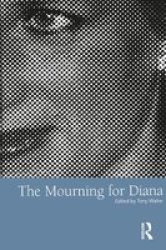Description
The author of the essay is discussing the 1997 death of Diana, Princess of Wales. The author discusses how the institutions of the media, the royal family, the church, and the police all had no pre-planned scripts for how to react to Diana's death. The author also discusses how the public reacted to Diana's death in a way that was different from other super-icons that have died in the past. The author argues that the mourning was focused on London and Diana's home, Kensington Palace, and that the mourning was global. The author also argues that the funeral had a record-breaking world television audience and that the public sent messages of condolence around the globe in cyber-space.
The unexpected death of Diana, Princess of Wales, in Paris on August 31st 1997 led to a period of mourning over the next week that took the world by surprise. Major institutions - the media, the royal family, the church, the police - for once had no pre-planned script. For the public, this was a story with an ending they had not anticipated. How did these institutions and the public create a cultural order in the face of such disorder? Both those involved in the mourning and those who objected to it struggled to understand the depth and breadth of emotion shaking Britain and the world. Mourning was focused on London, where Diana's body lay, and on Diana's home, Kensington Palace. Throughout the city and especially in Kensington Gardens, millions left shrines to the dead princess made of flowers, messages, teddy bears and other objects. In towns and villages around the UK, this was repeated. The mourning was also global, with media dominated by Diana's death in scores of countries. The funeral itself had a record-breaking world television audience, and messages of condolence floated around the globe in cyber-space. How unique was all this? Does it mark a shift in the culture of mourning, of the position of the monarchy, of the role of emotion in British culture? How does it compare with the mourning for other super-icons - JFK, Evita, Elvis, and Monroe? Was it media-induced hysteria? Or was it simply a magnification of normal mourning behaviour? Focusing on the extraordinary actions of millions of ordinary people, this book documents what happened and shows how a modern rational society coped with the unexpected in a proto-revolutionary week that left participants and objectors alike asking 'why did we behave like this?
